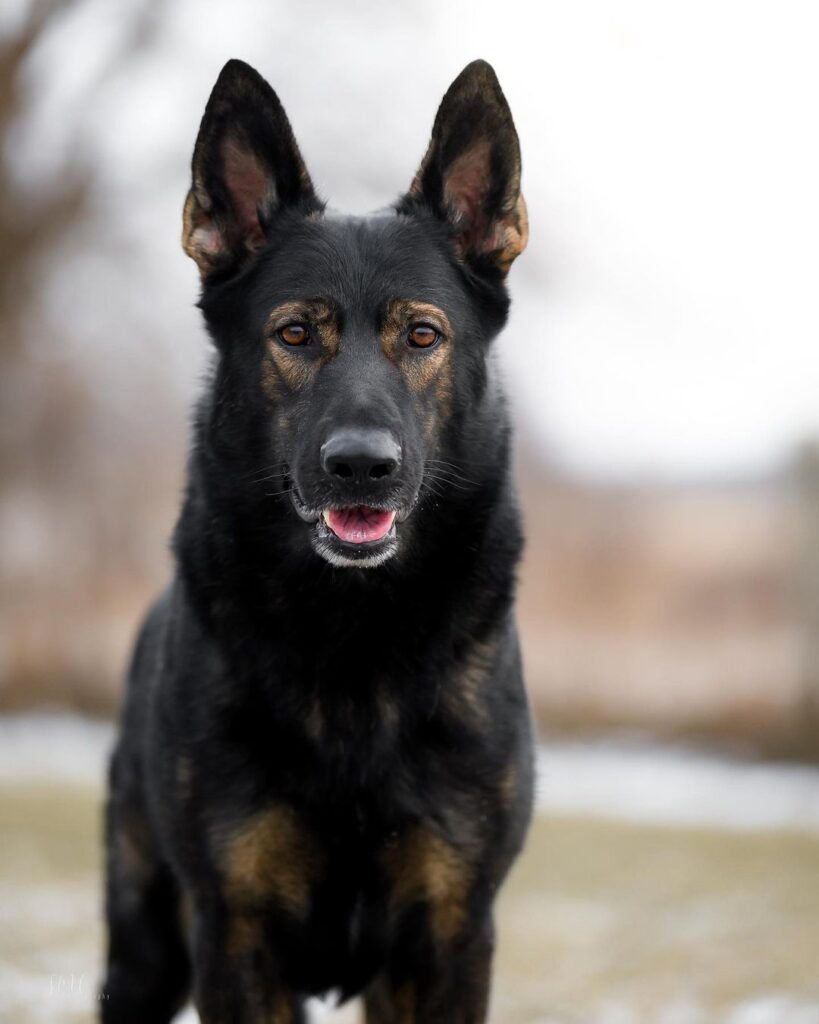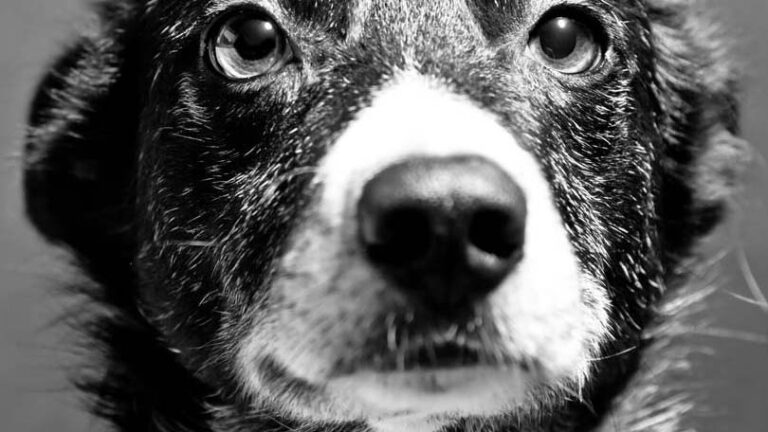German Shepherd Feeding Chart
| Age: | Kilocalories (Per day) | Daily Food Quantity (Cups) | Fats: | Protein: |
| 2 – 3 Months | 1050 – 1500 | 1 – 1.5 | 8% | 22 – 25% |
| 4 – 5 Months | 1200 – 1400 | 1.5 – 2 | 8% | 22 – 25% |
| 6 – 9 Months | 1600 – 1800 | 2 – 3 | 8% | 22 – 25% |
| 10 – 12 Months | 1700 – 2000 | 3 – 3.5 | 8% | 22 – 25% |
| 1 – 6 Years | 1700 – 2400 | 3.5 – 4 | 5% | 18% |
| 7 Years and above | 1300 – 1600 | 3.5 | >5% | 16% |
One of the first fundamentals you must master as a German shepherd owner is knowing how to feed your dog properly. If you don’t perform it correctly, your dog may have a variety of health issues, including infection, skin illness, and hair loss.
While there isn’t a set formula for feeding a dog, all veterinarians and other animal healthcare specialists agree on a few general best practices. The most frequent queries regarding German shepherd feeding charts are addressed below in this article.

Nutritional Requirements For German Shepherd
Feeding your German shepherd dog food that satisfies its nutritional demands should be your first priority, according to the German Shepherd feeding chart. Although it may seem obvious, doing this can cause your dog a lot of trouble and is a simple error to make.
Always put German shepherds’ health needs first when deciding what food to feed them. A German shepherd is a medium- to large-breed dog, which puts him at a higher risk for several health issues, the most well-known of which are issues with the bones and the hips. Joint illnesses are more likely to develop in them as a result of genetics, and too much rapid development is another factor that might exacerbate these issues.
Because of this, even though German shepherds require the same essential nutrients as other dog breeds, including protein, fat, carbohydrates, and other vitamins and minerals, you should exercise caution when feeding your dog nutrient-rich dog foods because they can encourage dangerously rapid growth.
Along with health concerns, there are other factors to consider when selecting dog food, such as your dog’s size, age, and level of activity.
According to the German shepherd feeding chart, it is accepted that adult dogs need up to 2100 calories per day. Depending on how big and active the dog is, anything between 1300 and 2100 is considered suitable.
The amount of calories a dog consumes is often determined by their age, present health, and the amount of exercise they receive. Senior German Shepherds that aren’t extremely active shouldn’t require more than 1300 calories per day to maintain a healthy weight. However, even in their later years, energetic dogs will need up to 1700 calories each day.
German Shepherd Feeding Chart As A Puppy
In general, adult German shepherds need 1,272 to 2,100 calories per day. How about a German Shepherd puppy, though? What is a German Shepherd feeding chart for a puppy?
Actually, puppies consume twice as many calories per pound of body weight. This indicates that a German Shepherd puppy that is 8 weeks old may consume twice as much food as an adult. Puppies need to consume twice as much food as adults do to sustain their growth and development. To maintain their bodies’ health and provide them with the energy they need to grow, they must consume enough calories.
A young German Shepherd puppy needs at least 80–90 calories per pound of body weight to grow and thrive. A German Shepherd puppy’s calorie needs can be decreased to about 40–60 calories per pound of body weight once he reaches the age of four months. Regularly weigh your puppy, assess their general health, and modify their calorie intake to assist their growth.
Even more active than working adult dogs are young shepherds. They are, after all, developing into their enormous paws, playing catch, dashing around with zoomies, chewing (things they should and shouldn’t), and learning everything there is to know about the world.
Keep in mind that calories differ significantly across manufacturers and brands. Always read the nutritional information and feeding instructions on the food box before feeding it to your pet.
Detailed German Shepherd Feeding Chart
German Shepherd pups should stay with their moms for the first two months of their lives since this is the time when they obtain all of the nutrients they need from their mother’s milk. So, let’s explore the German shepherd feeding chart in detail.
One-Month-Old German Shepherd
During the first few weeks of a pup’s life, breeders and dog owners typically have little to do for the animal. The German Shepherd feeding chart is simple in the first few weeks; up until the puppies lose all of their puppy teeth, their mother serves as their primary feeding source.
When they begin to experience teething discomfort, the mother becomes concerned and begins the weaning process on their own, independently. For a while, you can attempt to persuade the female German Shepherd to keep nursing, but if you see that she’s in a lot of pain, you can console her by giving her puppy mush instead of her mother’s milk.
Puppy mush is basically a combination of dry dog kibble and water or formula to replace the mother’s milk. Puppies who are one month old do not yet have teeth that are strong enough to eat kibble, so it is important to soften their diet as much as possible.
Two-Month-Old German Shepherd
Puppies start exploring their environment as soon as they reach the one-month mark. Although the puppies’ primary food source should still be breastmilk, this would be a good time to try introducing them to puppy food. Puppy food, often known as “puppy mush,” should be created with 1/4 food and 3/4 water because puppies’ stomachs aren’t yet ready for substantial meals.
Additionally, a German Shepherd puppy should be at least eight weeks old if you plan to adopt one. Purchase the same puppy food the breeder recommended, at least for the first several weeks as they adjust to their new surroundings.
3 to 6 Months-Old German Shepherd
The German Shepherd feeding chart becomes a little more complicated by the time the puppy reaches the age of 3 months. A puppy can experience a growth spurt right before the age of three months, so don’t be startled if your pet’s hunger surges unexpectedly.
To instill appropriate eating practices and avoid overfeeding your pup, it’s crucial to establish their feeding routine throughout the third and fourth months of their existence. Even if you shouldn’t restrict their eating too much at this age, giving them complete control over the kitchen and allowing them to overindulge whenever they like is also not a smart idea.
Large-breed puppies’ parents typically give in to their puppies’ requests for more food, which might cause the puppies to become overweight as adults.
6 to 12 Months-Old German Shepherd
Even though the development of the German Shepherd puppy will continue throughout this time, it will go much more slowly than it did in the first six months of its existence. As the pups approach their first birthday, their diet will require fewer calories, so you may cut down on the number of meals by two (or three, if you believe it will be better for your pet).
You must, however, continue to keep an eye on your puppy’s weight, health, and amount of physical activity in order to periodically monitor its progress. The majority of dog owners believe that giving their puppies fewer meals throughout the day is better for them since they get the same amount of calories and are less likely to feel hungry at specific times of the day.
Adult German Shepherd Feeding Chart
Once your puppy reaches adulthood, it is time to explore the adult German Shepherd feeding chart. Even though during this period your dog should still be eating puppy food, you might want to consider obtaining adult dog food. Some owners use treats and training rewards to gradually introduce adult food to their pets, which is just enough to acclimate them to its unique flavor and texture.
On the other hand, some dog owners choose to gradually phase out puppy food by combining kibble for adult dogs with it in varying quantities. You won’t be behind if you begin when your dog reaches one because the transition often starts around the tenth month of age.
You must obviously speak with your veterinarian before making any changes to the diet your German Shepherd consumes. Only your veterinarian can tell you when your dog has reached adulthood and when switching to adult food is safe.
Given that German Shepherds are working dogs that frequently spend a lot of time in the field as the right paw of military and police services, this phase of your dog’s life is typically characterized by a high degree of physical activity.
They must thus be provided with a healthy diet, even if they are raised as household pets. These puppies really like being active, and they enjoy playing in dog parks and other open spaces as well as training. In addition to the other nutrients, the quantities of calcium, protein, and phosphorus in adult dog food will be different from those in puppy food, according to the German Shepherd feeding chart.
Bottom Line
We must be certain of how much and when to feed our pets as responsible pet owners. German Shepherds require special consideration when designing their diets since they are active canines with voracious appetites. They adapt well to a variety of diets, including dry, wet, raw, and homemade. Giving them too many presents or too many free meals might seriously harm their health.
We looked at the German shepherd feeding chart above. For your pup to develop properly, you must be aware of which foods are good for them and which ones they should avoid.

Nato is a content writer and researcher with a background in psychology who’s eager to explore the wonders of nature. As a travel enthusiast and animal lover, she hopes to inspire others to discover and cherish the beauty and importance of the natural world.







